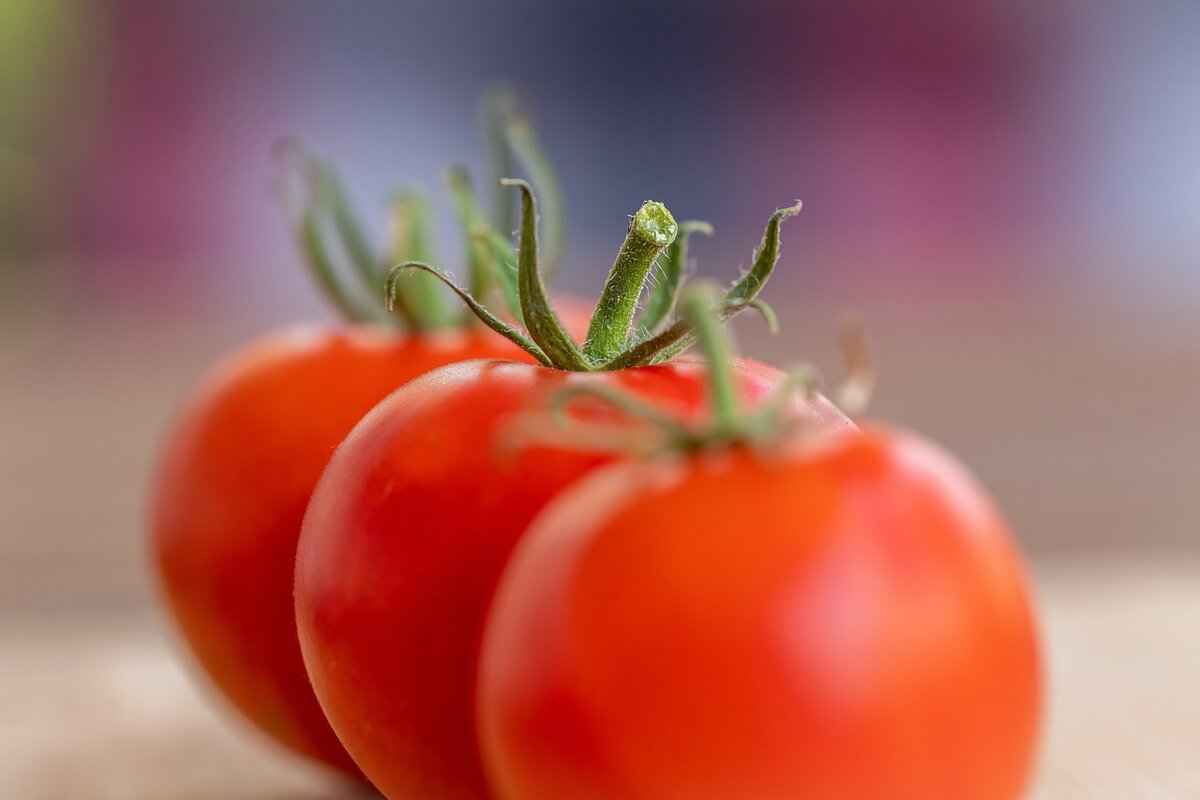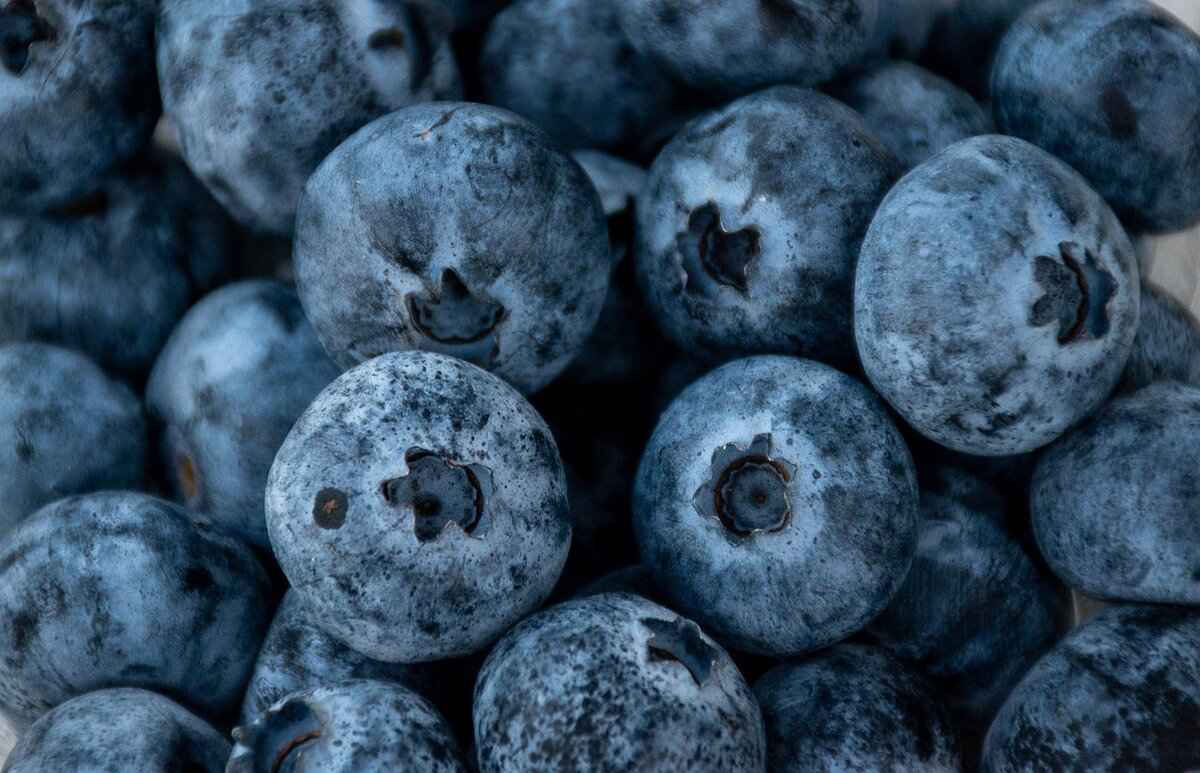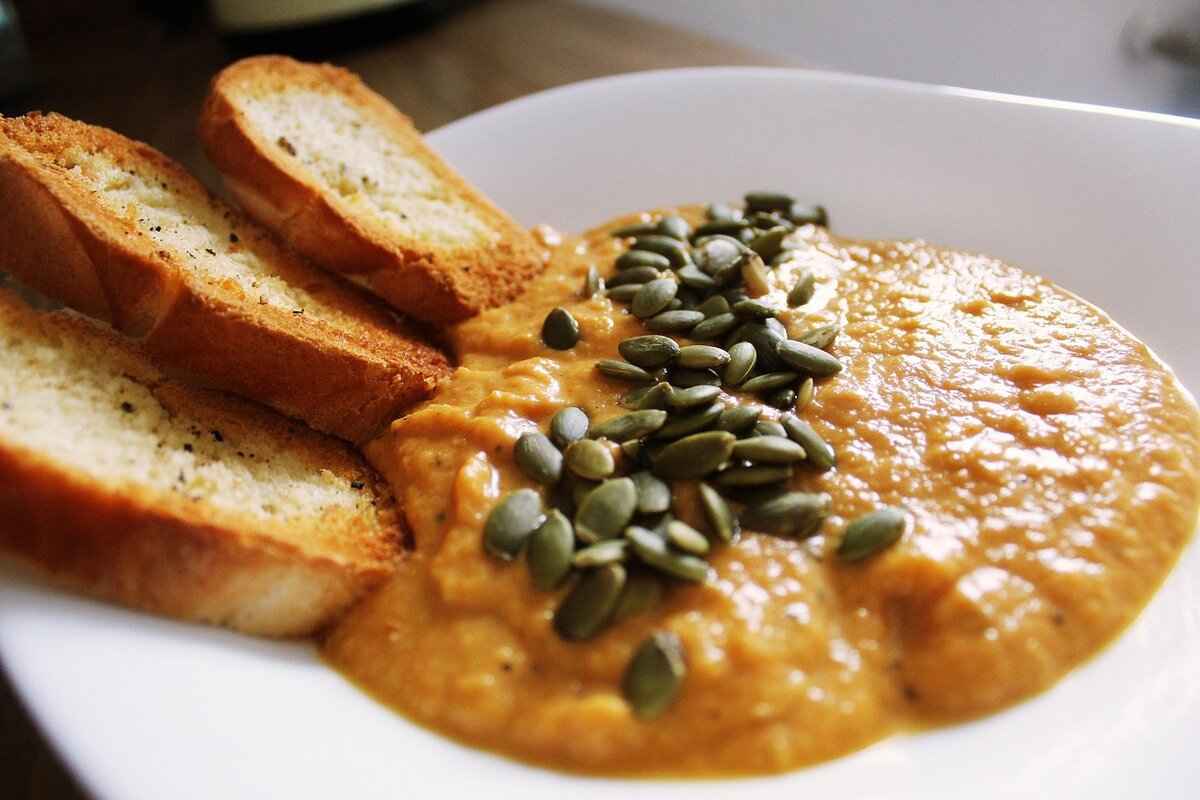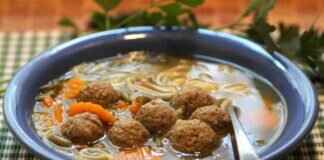Chuseok, often referred to as Korean Thanksgiving, is a significant harvest festival celebrated in South Korea. This vibrant holiday not only honors the ancestors but also showcases the rich culinary traditions that have been passed down through generations. During Chuseok, families gather to enjoy a variety of traditional dishes that symbolize gratitude and the bountiful harvest. Among these, songpyeon and galbijjim stand out as iconic foods, each with its own unique cultural significance and preparation methods.
Chuseok, celebrated on the 15th day of the 8th month of the lunar calendar, marks the fall harvest and is a time for families to reunite and pay respects to their ancestors through rituals known as jesa. This celebration emphasizes the importance of family, gratitude, and the appreciation of nature’s bounty. The foods prepared during Chuseok reflect these values, serving as a means to honor both the harvest and the family lineage.
The culinary landscape of Chuseok is diverse, featuring a range of dishes that highlight seasonal ingredients. Essential foods include:
- Songpyeon: A traditional rice cake filled with sweetened sesame seeds or red bean paste.
- Galbijjim: Braised short ribs cooked in a savory sauce.
- Japchae: Stir-fried glass noodles with vegetables and meat.
- Banchan: A variety of small side dishes served with meals.
Songpyeon is a beloved staple of Chuseok. These crescent-shaped rice cakes are made from glutinous rice flour and are often filled with a mixture of sweetened ingredients like sesame seeds or chestnuts. The preparation of songpyeon is a cherished family activity, where members come together to shape and fill the cakes, often under the guidance of older generations.
Making songpyeon at home can be a delightful experience. Here’s a simple recipe:
Ingredients:- 2 cups of glutinous rice flour- 1 cup of water- Fillings: Sweetened sesame seeds or red bean pasteInstructions:1. Mix the glutinous rice flour with water to form a dough.2. Divide the dough into small portions and flatten each piece.3. Add your desired filling and shape the dough into a crescent.4. Steam the songpyeon for about 20 minutes until cooked.
Songpyeon is not just a treat; it embodies wishes for prosperity and good fortune. Traditionally, it is believed that the shape of the rice cake resembles a crescent moon, symbolizing the hope for a bountiful harvest. It is said that the more beautiful the songpyeon, the more blessings the maker will receive.
Galbijjim, or braised short ribs, is another essential dish for Chuseok. This flavorful dish is made by slow-cooking beef short ribs in a savory sauce that typically includes soy sauce, garlic, and sugar. The result is tender, succulent meat that is enjoyed by all family members. Galbijjim is often served with rice and various side dishes, making it a centerpiece of the Chuseok feast.
In addition to songpyeon and galbijjim, other notable dishes enhance the festive atmosphere. These include:
- Japchae: A savory stir-fried noodle dish made with sweet potato noodles, vegetables, and sometimes beef.
- Banchan: A selection of small side dishes that complement the main meals, often including pickled vegetables and pancakes.
As culinary traditions evolve, many are putting modern twists on classic Chuseok dishes. Chefs experiment with fusion recipes that blend traditional Korean flavors with international cuisines, creating new and exciting culinary experiences while honoring the essence of Chuseok.
With a growing focus on health, many families are seeking lighter alternatives to traditional Chuseok foods. By using less sugar, incorporating more vegetables, and opting for leaner meats, one can enjoy the flavors of Chuseok without compromising health.

What is Chuseok and Its Significance?
Chuseok, often referred to as Korean Thanksgiving, is one of the most significant and cherished holidays in Korea. This major harvest festival, celebrated on the 15th day of the 8th month of the lunar calendar, marks the time for families to come together and express gratitude for the year’s harvest. The festival’s origins can be traced back to ancient agrarian practices, where communities celebrated the harvest with various rituals and offerings to honor their ancestors.
The significance of Chuseok extends beyond mere feasting; it embodies the spirit of family reunions, respect for ancestors, and cultural heritage. During this time, many Koreans travel to their hometowns to pay respects at family gravesites, a practice known as seongmyo. This ritual involves cleaning the graves and presenting offerings of food, a way of expressing gratitude to ancestors for their blessings.
Understanding Chuseok’s cultural importance also sheds light on the various traditional foods that are integral to the celebration. Each dish holds its own unique symbolism and significance, reflecting the abundance of the harvest and the values of sharing and unity.
Chuseok features a variety of traditional dishes that reflect the season’s bounty. The holiday table is often adorned with an array of foods that not only satisfy the palate but also carry deep cultural meanings. Here are some of the essential foods that grace the tables during this significant holiday:
- Songpyeon: These crescent-shaped rice cakes are filled with sweetened sesame seeds or beans and are a must-have during Chuseok.
- Galbijjim: A hearty and flavorful braised short rib dish that symbolizes prosperity.
- Japchae: Stir-fried glass noodles mixed with vegetables and meat, representing harmony.
- Banchan: Various side dishes that complement the main meals, showcasing seasonal ingredients.
One of the most beloved dishes of Chuseok is songpyeon. This traditional rice cake is not only delicious but also holds significant cultural meaning. Made from glutinous rice flour, songpyeon is often filled with sweet ingredients like sesame seeds, chestnuts, or red beans. The process of making songpyeon is a cherished family activity, where members gather to shape the cakes and share stories.
Songpyeon is more than just a treat; it embodies wishes for prosperity and good fortune. The crescent shape of the cake symbolizes the moon and the harvest, representing the hope for a bountiful year ahead. Families often make a wish while crafting songpyeon, adding a personal touch to this delightful dish.
Galbijjim, or braised short ribs, is another essential dish for Chuseok. This savory dish is cooked slowly with a rich blend of soy sauce, garlic, and vegetables, creating a tender and flavorful experience. The preparation of galbijjim often involves family members coming together to share in the cooking process, reinforcing the bonds of family and community.
Beyond songpyeon and galbijjim, Chuseok features a variety of other dishes that are equally important. Japchae is a popular side dish made from stir-fried glass noodles, known for its savory flavor and colorful presentation. Banchan, the small side dishes served with meals, are an essential part of the dining experience, offering a variety of tastes and textures that complement the main dishes.
As culinary traditions evolve, many people are putting modern twists on classic Chuseok dishes. Chefs are reinterpreting these beloved foods while maintaining their essence, creating fusion recipes that blend traditional Korean flavors with international cuisines. Additionally, there is a growing trend toward healthier versions of classic dishes, allowing families to enjoy the festivities without compromising on health.

Traditional Foods of Chuseok: A Culinary Overview
Chuseok, often referred to as the Korean Thanksgiving, is a time when families gather to celebrate the harvest and honor their ancestors. This significant holiday is marked by a rich array of traditional dishes that not only showcase the season’s bounty but also reflect the cultural heritage of Korea. The foods enjoyed during Chuseok are deeply rooted in history and are essential for creating a festive atmosphere.
During Chuseok, the tables are adorned with an impressive spread of traditional dishes that symbolize gratitude for the harvest. Each dish carries its own significance and is prepared with love and care. Here are some of the essential foods that grace the tables during this holiday:
- Songpyeon: These delicate, crescent-shaped rice cakes are filled with sweetened sesame seeds or red bean paste. Making songpyeon is often a family activity, symbolizing unity and prosperity.
- Galbijjim: This hearty dish consists of braised short ribs, slow-cooked to perfection in a savory sauce. It embodies the warmth of family gatherings and is a favorite among many.
- Japchae: A stir-fried noodle dish made from sweet potato starch, japchae is mixed with various vegetables and sometimes beef. Its sweet and savory flavor makes it a popular side dish during the celebrations.
- Banchan: These small side dishes accompany the main meals and can include pickled vegetables, seasoned greens, and various other delights. Banchan adds variety and flavor to the dining experience.
In addition to these iconic dishes, Chuseok features a range of seasonal ingredients that enhance the flavors of the meals. For instance, fresh fruits such as pears and apples are often used in offerings to ancestors, signifying the abundance of the harvest.
Each dish served during Chuseok is more than just food; it is a representation of cultural values and traditions. For example, songpyeon is not only a delicious treat but also symbolizes wishes for prosperity and good fortune for the coming year. The act of making songpyeon together as a family reinforces bonds and creates lasting memories.
Similarly, galbijjim is a dish that showcases the skill and care involved in Korean cooking. The slow braising process allows the flavors to meld beautifully, creating a dish that is both comforting and rich in taste. This dish is often reserved for special occasions, making it a highlight of the Chuseok feast.
The preparation methods for Chuseok foods are often passed down through generations, ensuring that traditional techniques are preserved. For example, making songpyeon involves mixing glutinous rice flour with water to create a dough, which is then shaped and filled before being steamed. The process is a labor of love and requires patience and skill.
On the other hand, galbijjim requires marinating the short ribs in a mixture of soy sauce, garlic, and sugar before slow-cooking them with vegetables. This method allows the meat to become tender and infuses it with deep flavors.
As Chuseok approaches, many families begin to prepare these dishes well in advance, ensuring that everything is perfect for the celebration. The effort put into the meals reflects the importance of family and tradition during this festive time.
In summary, the traditional foods of Chuseok are a delightful representation of Korean culture and heritage. They not only bring families together but also serve as a reminder of the significance of gratitude and remembrance during this special holiday.
Songpyeon: The Iconic Rice Cake
Songpyeon, a traditional Korean rice cake, holds a special place during Chuseok, Korea’s cherished harvest festival. This delightful crescent-shaped treat is not only a culinary staple but also a symbol of the season’s bounty and familial unity. In this article, we will explore the ingredients that make up songpyeon, its rich symbolism, and the significance of making it during this important festival.
The preparation of songpyeon involves a few essential ingredients:
- Glutinous Rice Flour: The primary ingredient, providing the chewy texture.
- Water: Used to knead the rice flour into a dough.
- Fillings: Common fillings include sweetened sesame seeds, red bean paste, or chestnuts.
- Pine Needles: Often used in the steaming process, they impart a subtle aroma to the rice cakes.
Songpyeon is much more than just a delicious treat; it embodies various cultural meanings:
- Wishes for Prosperity: Families make songpyeon with hopes for a bountiful harvest and good fortune in the coming year.
- Family Bonding: The process of making songpyeon is often a family affair, fostering unity and traditions across generations.
- Celebration of Nature: The ingredients reflect the harvest season, celebrating the connection between people and the land.
Making songpyeon can be a delightful and engaging experience. Here’s a simple guide:
1. Mix glutinous rice flour with water to form a dough.2. Divide the dough into small portions.3. Flatten each portion and place a small amount of filling in the center.4. Fold the dough over to create a crescent shape and pinch the edges to seal.5. Steam the songpyeon on a bed of pine needles for about 20 minutes.
The crescent shape of songpyeon is symbolic of the moon and the harvest. In Korean culture, the moon is associated with fertility and prosperity. By shaping the rice cake in this manner, families express their hopes for abundance and happiness.
During Chuseok, songpyeon is often presented on the Chuseok table alongside other traditional dishes. Families gather to share stories, celebrate their heritage, and enjoy the fruits of their labor. The act of making and sharing songpyeon strengthens familial ties and serves as a reminder of the importance of community and gratitude.
In conclusion, songpyeon is a beloved symbol of Chuseok, representing not only a delicious treat but also the deeper cultural values of prosperity, unity, and celebration of nature. As families come together to prepare and enjoy this iconic rice cake, they pass down traditions and create lasting memories that enrich the essence of this festive season.
How to Make Songpyeon at Home?
Making songpyeon at home is not just a cooking task; it’s a delightful way to bond with family and celebrate the spirit of Chuseok. This traditional Korean rice cake is not only delicious but also symbolizes the harvest and prosperity. Below, we will explore the ingredients needed and the step-by-step process to create these beautiful crescent-shaped treats.
- Sweet Rice Flour (also known as glutinous rice flour): 2 cups
- Water: 1 cup
- Salt: a pinch
- Filling: This can vary, but popular options include:
- Sweetened Red Bean Paste
- Sesame Seeds mixed with sugar
- Chestnuts or Walnuts for a nutty flavor
- Food Coloring: Optional, for aesthetic appeal
- Rice Flour: For dusting
Follow these simple steps to create your own songpyeon:
- Mix the Dough: In a large bowl, combine the sweet rice flour, water, and a pinch of salt. Mix until you achieve a smooth, pliable dough. If you wish to add color, divide the dough and mix in food coloring to create different shades.
- Prepare the Filling: Choose your desired filling and prepare it in advance. If using red bean paste, ensure it is sweetened to your taste. You can also mix in some finely chopped nuts for added texture.
- Shape the Songpyeon: Take a small piece of dough (about the size of a golf ball) and flatten it in your palm. Place a small spoonful of your filling in the center, then fold the dough over to create a crescent shape. Pinch the edges to seal securely.
- Decorate: Use your fingers to create a pattern on the surface of the songpyeon. This not only adds beauty but also helps to distinguish different flavors.
- Steam the Songpyeon: Prepare a steamer lined with a clean cloth or banana leaves to prevent sticking. Place the songpyeon in the steamer and steam for about 20-30 minutes. The rice cakes should turn slightly translucent when done.
- Cool and Serve: Once cooked, allow the songpyeon to cool slightly. You can serve them warm or at room temperature. For an extra touch, roll them in sesame seeds or powdered soybean flour.
Creating songpyeon together can foster a sense of community and tradition among family members. Each person can contribute to the process, from mixing the dough to choosing fillings and shaping the rice cakes. This activity not only teaches valuable cooking skills but also allows for storytelling and sharing memories of past Chuseok celebrations.
As you embark on this culinary journey, remember that the most important ingredient is the love and joy shared in the kitchen. Enjoy the process, and savor the delicious results of your hard work!
What Does Songpyeon Symbolize?
Songpyeon, a traditional Korean rice cake, holds a special place in the hearts of many, especially during the Chuseok festival. This delightful treat is not merely a culinary creation; it is a symbol of hope and aspiration. But what exactly does songpyeon symbolize, and why is it so significant in Korean culture?
Songpyeon is often described as a crescent-shaped rice cake filled with various ingredients, such as sweetened sesame seeds, red beans, or chestnuts. Each filling carries its own meaning, representing different wishes and aspirations. For example, sesame seeds symbolize wealth, while red beans are associated with protection against evil spirits. This diversity in fillings reflects the variety of hopes that families hold dear during the harvest season.
Beyond its delicious taste, songpyeon is deeply intertwined with the concept of prosperity and good fortune. Traditionally, families prepare songpyeon together, making it a communal activity that strengthens bonds. As they mold the rice cakes, they impart their wishes for a bountiful harvest and a prosperous year ahead. The act of making songpyeon becomes a ritual of hope, where each cake is infused with the family’s dreams and aspirations.
During Chuseok, families honor their ancestors through a ritual called Charye, which involves offering food, including songpyeon, to their ancestors. This practice not only pays respect but also seeks blessings from those who came before. By offering songpyeon, families express their gratitude and desire for continued prosperity, intertwining their present with their past.
The preparation of songpyeon is often a family affair, symbolizing unity and cooperation. As family members gather to create these rice cakes, they share stories, laughter, and hopes. This communal aspect of songpyeon preparation reinforces the importance of family ties and cultural heritage. The act of making songpyeon is as significant as consuming it, as it encapsulates the essence of togetherness and shared aspirations.
In recent years, songpyeon has evolved beyond its traditional fillings, with modern chefs experimenting with flavors and ingredients. From matcha to chocolate, these innovations reflect a changing culinary landscape while still honoring the core symbolism of songpyeon. These modern interpretations allow younger generations to connect with their cultural roots while embracing new tastes.
Ultimately, songpyeon is more than just a delicious treat; it embodies the wishes for prosperity, health, and family unity. Each bite is a reminder of the hopes and dreams that families share during Chuseok. As this beloved dish continues to be prepared and enjoyed, it remains a vital part of Korean culture, bridging the past with the present and fostering a sense of community and tradition.
Galbijjim: A Hearty Braised Short Rib Dish
Galbijjim, or braised short ribs, is a beloved dish that holds a special place in the hearts of many Korean families, especially during the festive season of Chuseok. This rich and flavorful dish is not only a culinary delight but also a symbol of family gatherings and cultural heritage. Understanding the cooking techniques and flavors that make galbijjim a staple at the Chuseok table can enhance your appreciation for this iconic meal.
The essence of galbijjim lies in its tender, succulent meat, which is slow-cooked to perfection. The preparation of this dish involves marinating the short ribs in a mixture of soy sauce, sugar, garlic, and sesame oil, which imparts a deep umami flavor. The slow braising process allows the meat to absorb these flavors while becoming incredibly tender.
- Marination: The marination process is crucial. Allow the short ribs to soak in the marinade for at least a few hours, or ideally overnight, to ensure maximum flavor absorption.
- Slow Cooking: Braising the ribs at a low temperature for several hours is key. This technique breaks down the collagen in the meat, resulting in a melt-in-your-mouth texture.
- Adding Vegetables: Traditional recipes often include ingredients such as carrots, radishes, and onions, which not only add flavor but also enhance the dish’s nutritional value.
The flavor profile of galbijjim is a harmonious blend of sweet, savory, and slightly nutty notes. The sweetness from the sugar and the depth from the soy sauce create a rich base, while the addition of garlic and sesame oil introduces aromatic elements that elevate the dish. The final touch often includes a sprinkle of sesame seeds and chopped green onions, adding a fresh and crunchy contrast to the tender meat.
During Chuseok, families come together to celebrate the harvest and honor their ancestors. Galbijjim serves as a centerpiece that brings loved ones around the table, fostering a sense of community and togetherness. The act of sharing this hearty dish is a way of expressing love and gratitude, making it a cherished tradition.
While the traditional recipe is beloved, many families have their own variations of galbijjim. Some may opt for a spicier version by adding gochugaru (Korean red pepper flakes) or incorporate different vegetables based on personal preferences. These adaptations keep the dish relevant and exciting, allowing each family to add their unique touch.
Galbijjim is typically served with steamed rice, which helps balance the rich flavors of the dish. It can also be accompanied by a variety of banchan (side dishes) such as pickled radishes or seasoned greens, enhancing the overall dining experience. The combination of flavors and textures makes for a satisfying meal that is sure to please everyone at the table.
In conclusion, galbijjim is more than just a dish; it is a reflection of Korean culture and family values. Its rich flavors, tender meat, and the warmth it brings to family gatherings make it an indispensable part of Chuseok celebrations. Whether you are enjoying it at home or at a family gathering, galbijjim is a dish that embodies the spirit of togetherness and gratitude.

Other Notable Dishes to Try During Chuseok
Chuseok, the vibrant harvest festival in Korea, is renowned not only for its iconic dishes like songpyeon and galbijjim but also for a myriad of other delightful foods that grace the tables during this festive period. The culinary landscape of Chuseok is rich and diverse, reflecting the country’s agricultural heritage and communal spirit. This section delves into some of the other notable dishes that enhance the celebratory atmosphere of Chuseok.
- Japchae: A Flavorful Stir-Fried Noodle Dish
- Banchan: Essential Side Dishes that Complement Meals
- Kimchi: The Iconic Fermented Vegetable Side Dish
- Hobakjeon: Savory Pumpkin Pancakes
- Chueotang: Freshwater Loach Soup
Japchae, made from sweet potato starch noodles, is a beloved dish during Chuseok. This stir-fried noodle dish is typically combined with a variety of vegetables such as carrots, spinach, and mushrooms, and often includes beef or other proteins. The unique texture of the glass noodles, along with the savory soy sauce and sesame oil seasoning, makes japchae a delightful addition to any Chuseok feast. Its vibrant colors and flavors symbolize the richness of the harvest.
Banchan refers to the array of small side dishes served alongside the main courses in Korean cuisine. During Chuseok, these side dishes are particularly important as they offer variety and complement the main dishes. Common banchan include kimchi, pickled vegetables, and seasoned greens, each adding a burst of flavor and texture to the meal. The practice of serving banchan also emphasizes the communal aspect of dining, as families gather around a table filled with an assortment of dishes.
Kimchi, Korea’s famous fermented vegetable dish, is a staple at every meal, including during Chuseok. Made primarily from napa cabbage and radishes, kimchi is seasoned with chili pepper, garlic, ginger, and various other spices. Its tangy flavor and health benefits make it a perfect accompaniment to the rich and hearty dishes served during Chuseok. Moreover, the preparation of kimchi is often a family affair, with members coming together to make large batches, further strengthening familial bonds.
Hobakjeon are savory pancakes made from sliced zucchini or pumpkin, lightly battered and pan-fried until golden brown. This dish is not only delicious but also symbolizes the bountiful harvest of autumn. The crispy texture and subtle sweetness of hobakjeon make it a popular choice among both children and adults during Chuseok festivities. They are often served with a dipping sauce made of soy sauce and vinegar, enhancing their flavor.
Chueotang, or loach soup, is a traditional dish that showcases the flavors of the Korean countryside. Made with freshwater loach, this hearty soup is often enriched with vegetables and seasoned with spices, creating a comforting dish that warms the soul. While it may not be as commonly served as other dishes, chueotang holds a special place in Chuseok celebrations, representing the connection to nature and the importance of fresh ingredients.
In conclusion, Chuseok is a time for families to gather and celebrate the harvest with a rich array of traditional dishes. From the flavorful japchae to the essential banchan, each dish contributes to the festive spirit and cultural significance of this beloved holiday. Embracing these culinary delights allows families to honor their heritage while enjoying the flavors of the season.
Japchae: Savory Glass Noodles
Japchae, a beloved dish in Korean cuisine, is more than just a stir-fried noodle meal; it is a celebration of flavors and textures that holds a special place during Chuseok, Korea’s harvest festival. This dish highlights the abundance of seasonal ingredients, making it a popular choice for family gatherings and festive occasions.
The magic of japchae lies in its diverse ingredients, each contributing to its unique taste and texture. The primary component is sweet potato starch noodles, known as dangmyeon, which give the dish its signature chewy texture. Other essential ingredients include:
- Vegetables: Commonly used vegetables include carrots, spinach, bell peppers, and onions, which add color and nutrition.
- Protein: Thinly sliced beef is traditional, but you can also use chicken, shrimp, or tofu for a vegetarian option.
- Seasonings: Soy sauce, sesame oil, and garlic are key for flavoring, while sesame seeds add a delightful crunch.
The preparation of japchae is a meticulous yet rewarding process that involves several steps:
- Cooking the Noodles: Start by boiling the sweet potato noodles until they are tender, then rinse them under cold water to stop the cooking process.
- Stir-Frying the Vegetables: In a hot pan, stir-fry the assorted vegetables until they are just tender. Each vegetable should maintain some crunch for a delightful texture.
- Adding the Protein: Incorporate your choice of protein and cook until done. This step infuses the dish with savory flavors.
- Combining Ingredients: In a large bowl, mix the cooked noodles with the stir-fried vegetables and protein. Season generously with soy sauce, sesame oil, and garlic.
- Garnishing: Finish with a sprinkle of sesame seeds for added flavor and presentation.
Japchae is not just a dish; it is a symbol of abundance and prosperity. Traditionally served during special occasions, its vibrant colors represent good fortune. The combination of sweet, savory, and nutty flavors makes it a versatile dish that can be enjoyed warm or cold, as a main course or a side dish.
During Chuseok, families gather to honor their ancestors and celebrate the harvest. Japchae, with its rich flavors and beautiful presentation, serves as a centerpiece on the festive table. It is often prepared in large quantities, allowing families to share this delightful dish with loved ones, embodying the spirit of togetherness that Chuseok promotes.
Making japchae at home can be a fun and rewarding experience. You can customize the ingredients based on your preferences or dietary restrictions. Consider adding mushrooms or zucchini for extra flavor, or experiment with different proteins. This dish not only brings joy to your table but also allows for creativity in the kitchen.
In summary, japchae is a celebration of Korean culinary tradition, embodying the essence of Chuseok with its vibrant ingredients and rich flavors. Whether enjoyed during the holiday or as a comforting meal any day of the year, it remains a cherished dish that connects families and friends through shared experiences and delicious food.
Banchan: The Essential Side Dishes
Banchan refers to the small side dishes that accompany meals in Korea, playing a crucial role in the culinary experience. These dishes are not only flavorful but also enhance the overall dining experience, especially during special occasions like Chuseok.
Banchan comes in various forms, each with unique flavors and textures. Here are some popular types:
- Kimchi: A staple in Korean cuisine, kimchi is fermented vegetables, usually napa cabbage or radishes, seasoned with spices.
- Namul: These are seasoned vegetable dishes, often made from spinach, bean sprouts, or other greens, lightly sautéed and flavored with sesame oil.
- Jeon: Korean pancakes made from various ingredients like seafood, vegetables, or meat, mixed in a batter and pan-fried until crispy.
- Pickled Vegetables: These add a tangy crunch to the meal, with common varieties including pickled cucumbers and radishes.
- Tofu Dishes: Often served in various forms, such as stir-fried or braised, tofu banchan provides a protein-rich option.
Banchan serves multiple purposes in Korean dining. They provide a variety of flavors that complement the main dishes, allowing diners to experience a range of tastes in one meal. Additionally, banchan promotes sharing and community, as meals are often enjoyed family-style, encouraging conversation and connection.
The preparation of banchan varies widely, with each dish requiring different techniques and ingredients. Here’s a brief overview:
- Kimchi: Requires fermentation, often taking days or weeks.- Namul: Involves blanching vegetables and seasoning them with various spices.- Jeon: Ingredients are mixed into a batter and pan-fried until golden.- Pickled Vegetables: Quick pickling methods can be used for a fast preparation.- Tofu Dishes: Tofu can be grilled, stir-fried, or braised with sauces.
During Chuseok, the variety of banchan served enhances the festive atmosphere. For example, kimchi pairs well with galbijjim, while namul provides a refreshing contrast to the richness of songpyeon. This balance of flavors is essential for a well-rounded meal.
Absolutely! Making banchan at home can be a rewarding experience. Here are a few tips:
- Start with simple recipes, such as pickled cucumbers or tofu stir-fry.
- Experiment with different seasonings to find your preferred flavor combinations.
- Prepare a variety of banchan to create a balanced meal that showcases different textures and tastes.
In conclusion, banchan is an essential aspect of Korean dining, especially during festive occasions like Chuseok. Its variety and flavor not only enhance the main dishes but also foster a sense of community and sharing among diners. Whether enjoyed in a restaurant or prepared at home, banchan adds depth and richness to the culinary experience.

Modern Takes on Traditional Chuseok Foods
As the vibrant festival of Chuseok approaches, the culinary landscape is witnessing a fascinating transformation. Chefs and home cooks alike are embracing the opportunity to innovate and reinterpret traditional dishes, ensuring that the essence of these beloved foods remains intact while infusing them with modern flair. This evolution not only celebrates the rich heritage of Korean cuisine but also invites a new generation to appreciate its flavors.
In recent years, many chefs have begun to experiment with classic Chuseok dishes, reimagining them to suit contemporary palates. For instance, songpyeon, the iconic rice cake traditionally filled with sweetened sesame or red bean paste, is now being crafted with innovative fillings such as matcha or chocolate. This fusion of flavors not only appeals to younger audiences but also showcases the versatility of this cherished treat.
Modern culinary techniques play a significant role in the reinterpretation of Chuseok dishes. Sous-vide cooking, for example, is being used to prepare galbijjim (braised short ribs) to achieve a perfect tenderness that was once only possible through hours of slow cooking. Chefs are also incorporating elements from international cuisines, creating dishes that are both familiar and exciting. A Japchae dish might now include quinoa instead of glass noodles, providing a healthier twist while retaining the original’s essence.
With an increasing emphasis on health and wellness, many are seeking lighter alternatives to traditional Chuseok dishes. For example, instead of using heavy sauces, chefs are opting for fermented or pickled ingredients that add flavor without the calories. Additionally, many are substituting refined sugars with natural sweeteners in desserts like songpyeon, making them more nutritious while still satisfying sweet cravings.
In the world of modern cuisine, presentation has become just as important as taste. Chefs are now focusing on the visual appeal of their dishes, using vibrant colors and artistic plating to enhance the dining experience. A traditional banchan (side dish) might be reimagined as a colorful salad, with fresh vegetables arranged artfully on the plate, inviting guests to indulge in the feast.
Fusion recipes are emerging as a popular trend among those celebrating Chuseok. By marrying traditional Korean flavors with global cuisines, chefs are creating unique dishes that honor the holiday while appealing to diverse tastes. Imagine a kimchi taco or bulgogi pizza—these innovative combinations not only celebrate Korean culinary heritage but also introduce it to a broader audience.
Home cooks looking to embrace modern Chuseok dishes can start by experimenting with traditional recipes. Incorporating seasonal ingredients or trying out new cooking methods can breathe new life into classic meals. For example, adding seasonal vegetables to galbijjim or trying a new twist on Japchae can make the cooking process exciting and enjoyable.
Ultimately, the evolution of Chuseok foods reflects a broader trend within the culinary world. As traditions are honored and reimagined, the spirit of Chuseok remains vibrant, inviting everyone to partake in the celebration of family, harvest, and togetherness.
Fusion Recipes: Blending Flavors
Fusion recipes are becoming increasingly popular, as they creatively combine traditional Korean flavors with international cuisines. These innovative dishes not only pay homage to the rich culinary traditions of Korea but also embrace modern culinary trends that appeal to a diverse audience. In this section, we will explore some exciting fusion recipes that honor the spirit of Chuseok while introducing new flavors and techniques.
Fusion recipes involve merging elements from different culinary traditions to create unique dishes. This blending of flavors and techniques allows chefs to experiment and innovate, often resulting in dishes that are both familiar and exciting. The goal is to create a harmonious balance that respects the origins of each cuisine while offering a fresh perspective.
During Chuseok, many families are looking for ways to celebrate tradition while also introducing modern twists to their meals. Here are some examples of fusion dishes that can elevate your Chuseok feast:
- Kimchi Tacos: A delightful combination of Korean and Mexican flavors, these tacos use spicy kimchi as a filling, topped with marinated bulgogi and fresh cilantro. The crunch of the kimchi paired with the savory beef creates a satisfying bite.
- Bulgogi Pizza: This dish features a classic pizza base topped with marinated bulgogi, mozzarella cheese, and a drizzle of gochujang sauce. The sweet and savory flavors of bulgogi complement the rich cheese, making it a crowd-pleaser.
- Songpyeon Ice Cream: A modern twist on the traditional songpyeon, this dessert incorporates the flavors of sweet rice cake into a creamy ice cream. Infused with sesame and filled with sweetened red bean paste, this cool treat is perfect for Chuseok celebrations.
Embracing fusion recipes during Chuseok can offer several benefits:
- Creativity: Fusion cooking encourages creativity in the kitchen. It allows cooks to experiment with flavors, textures, and presentations, leading to exciting new dishes.
- Inclusivity: Fusion recipes can cater to a wider audience, making traditional celebrations more inclusive for those who may not be familiar with Korean cuisine.
- Innovation: As culinary trends evolve, incorporating fusion recipes can keep traditions alive while adapting to contemporary tastes.
For those interested in crafting their own fusion dishes, here are some tips:
1. Choose a traditional Korean dish as your base.2. Identify a cuisine that you want to blend with.3. Experiment with ingredients, focusing on complementary flavors.4. Maintain balance; ensure that neither cuisine overpowers the other.5. Taste and adjust until you achieve a harmonious dish.
By exploring fusion recipes, you can celebrate Chuseok in a way that honors tradition while also embracing modern culinary innovations. These dishes not only reflect the rich history of Korean cuisine but also invite new experiences and flavors to the table.
Healthier Versions of Classic Dishes
As the celebration of Chuseok approaches, many families are eager to prepare traditional dishes while also considering their health. With a growing focus on wellness, there is an increasing demand for healthier versions of classic Chuseok foods. This article explores how you can enjoy beloved dishes without compromising on flavor or tradition.
In recent years, there has been a significant shift towards healthier eating habits. As people become more health-conscious, they are looking for ways to enjoy festive meals that align with their dietary goals. This not only includes reducing calories but also incorporating more nutrient-dense ingredients. By opting for lighter alternatives, families can celebrate Chuseok with dishes that nourish the body and soul.
- Songpyeon: Instead of using white rice flour, consider using brown rice flour or a blend of whole grains. This adds fiber and nutrients while maintaining the chewy texture that songpyeon is known for.
- Galbijjim: Traditional galbijjim can be high in fat due to the use of short ribs. Opt for leaner cuts of beef or even try using chicken thighs for a lighter version. Additionally, incorporating more vegetables can enhance the dish’s nutritional value.
- Japchae: To make japchae healthier, substitute traditional sweet potato noodles with zucchini noodles or whole grain noodles. This reduces calories while adding a fresh twist to the dish.
- Banchan: Instead of fried or heavily salted banchan, consider serving steamed or pickled vegetables. These options are lower in calories and provide a burst of flavor without added fats.
One common concern when modifying traditional recipes is the potential loss of flavor. However, there are several ways to enhance taste without relying on unhealthy ingredients:
- Herbs and Spices: Use fresh herbs like cilantro, green onions, and ginger to add depth and complexity to dishes.
- Umami Boosters: Incorporate ingredients such as mushrooms, tomatoes, or fermented sauces to enhance the umami flavor profile.
- Cooking Techniques: Instead of frying, try grilling, steaming, or baking to retain moisture and flavor without added fats.
While it’s important to adapt recipes for health, it’s equally vital to honor the traditions of Chuseok. Sharing meals with family and friends is at the heart of this celebration. By incorporating healthier versions of traditional dishes, families can create new memories while respecting the culinary heritage of Korea.
Ultimately, the goal is to enjoy the festive atmosphere of Chuseok without sacrificing health. By making thoughtful ingredient choices and employing creative cooking techniques, you can celebrate with dishes that are both delicious and nourishing. Embrace the joy of the season with a fresh perspective on traditional foods!
Frequently Asked Questions
- What is Chuseok?
Chuseok, often called Korean Thanksgiving, is a significant harvest festival in Korea that celebrates the fall harvest and honors ancestors. Families come together to share traditional meals and pay respects to their forebears.
- What are the traditional foods of Chuseok?
Chuseok features a variety of traditional dishes, including songpyeon (rice cakes), galbijjim (braised short ribs), and japchae (stir-fried glass noodles). Each dish holds cultural significance and is prepared with seasonal ingredients.
- How is songpyeon made?
Making songpyeon is a fun family activity! You’ll need glutinous rice flour, water, and your choice of fillings like sesame seeds or sweetened red beans. The process involves shaping the dough into crescent forms and steaming them, which makes them chewy and delicious.
- What does songpyeon symbolize?
Songpyeon symbolizes wishes for prosperity and good fortune for the coming year. Its crescent shape is reminiscent of the moon, representing harmony and balance in life.
- Are there modern takes on traditional Chuseok foods?
Absolutely! Many chefs are creating fusion recipes that blend traditional Korean flavors with international cuisines. Additionally, healthier versions of classic dishes are becoming popular, allowing everyone to enjoy Chuseok foods without compromising on taste.














